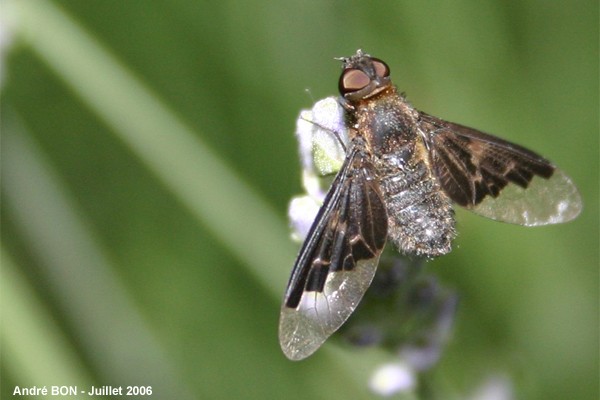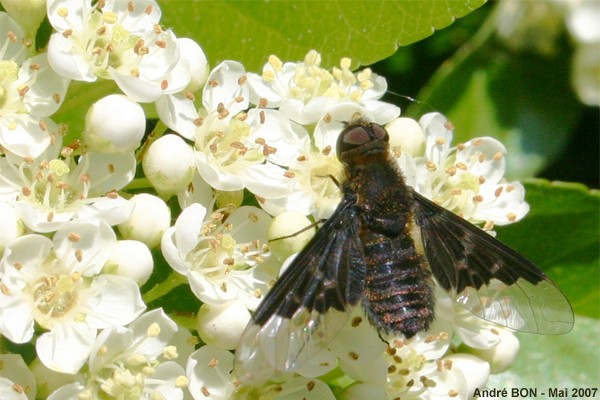


| Hemipenthes morio (Linnaeus, 1758) |



|
|
Scientific name: Hemipenthes morio (Linnaeus, 1758) Common name: French name: Anthracine morio Order: Diptera Family: Bombyliidae Wingspan : 5 to 15 mm (important variation). Biotope: Dry and sunny locations. Geographic area: Europe, Asia east to southern Siberia, North Africa, North America. Observation period : May to July |
The Hemipenthes morio's body is more or less dark grey. The wings show a black area and a clear area separated by a zigzag pattern. The black area touches the abdomen. It is larger along the inner edge of the wing. The clear area is located near the apex of the wing. The r1 cell (cell on the costal edge close to the wing tip) is clear at the apex. There are tawny hairs on the side of the abdomen. Larvae are parasitic on Hymenoptera and Diptera. Anthrax anthrax has more or less visible white marks on the tergites, 4 marks on tergites 2 and 3, and 2 longer marks on tergite 6. The black area on the wing is larger and extends as a short curve near the wing tip. Hemipenthes velutina shows long yellow hairs at the front of the thorax and white abdominal cross stripes. The apex of wing cell r1 is black. |
| [To know more about the Hemipenthes morio] [Next picture] [Top] |

|
I am used to observing Hemipenthes morio. Here on one side of a forest track. |
| [To know more about the Hemipenthes morio] [Next picture] [Previous picture] [Top] |

|
Here is another visitor of Lavender blossoms. |
| [To know more about the Hemipenthes morio] [Previous picture] [Top] |

|
On Pyracantha (Fire-thorn). The lack of white marks on the abdomen and the layout of the wing colours enable to clear the possible confusion with Hemipenthes velutina and Anthrax anthrax. |